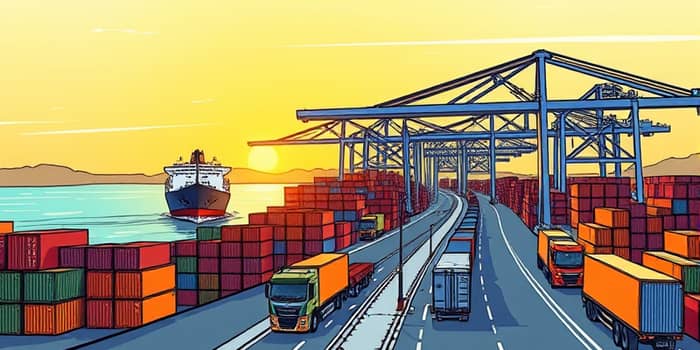
Over the past three years, the global shipping and logistics industry has navigated unprecedented disruptions and rapid changes. As we move into mid-2025, many analysts are noting a return to equilibrium. This article explores how post-pandemic supply chain recovery efforts are driving a renewed sense of stability and optimism among investors, while highlighting key trends, performance metrics, and future growth prospects for the sector.
The shipping and logistics market has expanded significantly, driven by rising international trade volumes and the growing demand for e-commerce fulfillment. Industry research indicates that the total freight and logistics market is set to top $8.04 trillion by 2030, while the global shipping and logistics sector as a whole is projected to reach $8.1 trillion by 2033 at a steady CAGR of 4%. Within this landscape, the cargo shipping segment is forecast to grow from $17.4 billion in 2025 to $24.18 billion by 2033, registering a CAGR of 4.2%.
Maritime shipping continues to dominate, handling roughly 80% of global trade by volume—a figure that underscores the importance of ocean carriers in cost-effective mass transportation. The air cargo market also plays a critical role, with the air freight segment projected at $241.87 billion in 2025. These figures set the stage for a broader discussion of how easing supply chains are translating into improved financial performance and stock valuation for key players.
Severe bottlenecks during the COVID-19 pandemic imposed higher costs, delivery delays, and inflationary pressures on economies worldwide. With these challenges largely behind us, companies are capitalizing on improved logistics networks and streamlined operations. The result has been a tangible reduction in shipping lead times, lower freight costs, and more predictable inventory cycles.
Large carriers and integrated logistics providers have reported sequential improvements in operating margins as vessels return to optimal utilization rates and trucking fleets operate with fewer disruptions. This cost cuts and easing disruptions dynamic has fostered a more favorable environment for shareholders, as evidenced by narrowing yield spreads and multiple expansions across the sector.
To remain competitive, industry leaders are embracing transformative technologies and eco-friendly practices. Investment in advanced systems has accelerated, reflecting a consensus that innovation will define the next chapter in shipping and logistics.
These advancements not only drive operational gains but also signal a broader shift toward resilient and environmentally responsible logistics networks.
As of the second quarter of 2025, many shipping and logistics stocks have shown signs of recovery, narrowing the gap with broader market indices. While the sector underperformed the S&P 500 by approximately 4% in the prior year, improved fundamentals and strategic cost management have rekindled investor interest.
Here is a snapshot of some prominent companies and their projected key metrics for 2025:
Beyond these figures, analysts are keeping a close eye on several other names. The following companies are positioned to benefit from continued supply chain normalization and technology adoption:
While the outlook is more positive, certain risks remain. Fluctuations in fuel prices, labor shortages, and geopolitical tensions can introduce volatility back into the market. Additionally, evolving international trade regulations require continuous compliance efforts, including documentation protocols and customs clearances.
On the policy front, governments worldwide are bolstering infrastructure spending, investing in port expansions, and promoting public-private partnerships to enhance resilience. Programs focusing on digitalization grants, workforce training, and data-sharing standards complement these efforts, ensuring that the industry can respond swiftly to future disruptions.
Companies are also developing risk mitigation strategies include supply diversification and the creation of contingency plans to address potential chokepoints, whether arising from natural disasters, labor disputes, or cyber threats.
The stabilization of shipping and logistics stocks in 2025 reflects a broader recovery in global supply chains and a strategic pivot toward innovation and sustainability. Investors drawn to this space can find opportunities in companies that combine strong balance sheets with forward-looking digital and green initiatives. As supply chains continue to improve and capacity constraints ease, the industry is poised for measured growth, underscoring why many analysts expect shipping and logistics equities to play a key role in diversified portfolios.
Looking ahead, monitoring policy developments, technological rollouts, and macroeconomic indicators will be crucial for stakeholders. With the right mix of operational efficiency and environmental stewardship, the shipping and logistics sector stands ready to deliver both resilience and returns for years to come.
References













